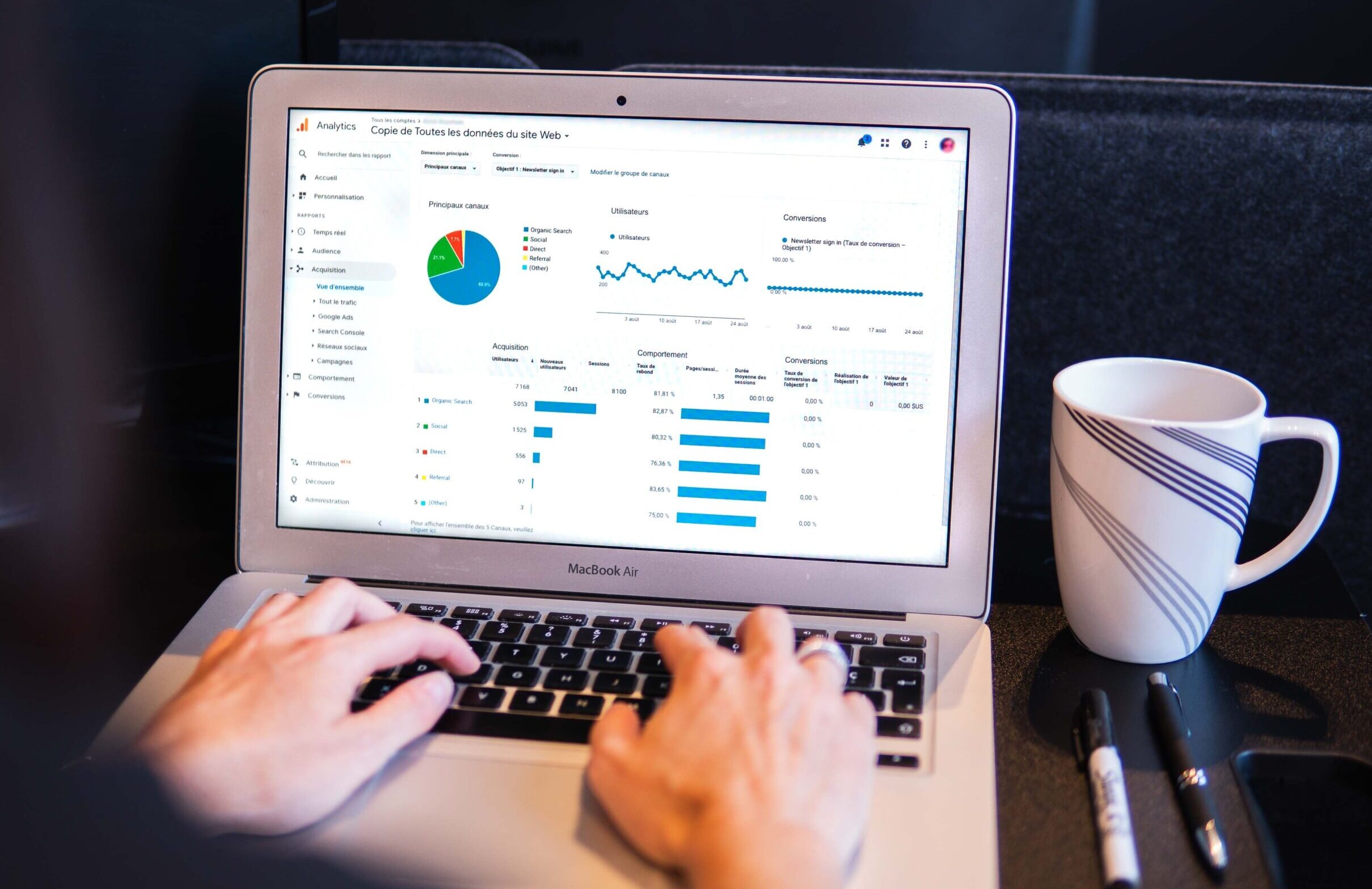In today’s digital landscape, understanding how your website performs is crucial for success. And that’s where web analytics comes in – a powerful tool that allows you to track and measure every aspect of your site’s performance. Whether you’re an e-commerce giant or a small business owner, harnessing the power of web analytics can help you make informed decisions, optimize user experience, and drive meaningful results. So buckle up and get ready to dive into this essential guide on how to use web analytics to improve your website!
What is web analytics?
Web analytics is the art and science of measuring, analyzing, and interpreting data from your website. It involves tracking various metrics and user behaviors to gain insights into how your site is performing. Think of it as a virtual detective that uncovers valuable information about your visitors – where they come from, what pages they visit, how long they stay, and much more.
At its core, web analytics provides you with a wealth of data-driven knowledge that can guide your decision-making process. It allows you to identify strengths and weaknesses in your website’s performance, spot trends over time, track the effectiveness of marketing campaigns, and ultimately improve the overall user experience.
To make sense of all this data, different types of web analytics tools are available. Some popular ones include Google Analytics (the most widely used), Adobe Analytics (ideal for large enterprises), and Matomo (a privacy-focused alternative). These tools provide powerful features such as real-time tracking, custom reports, funnel analysis, conversion tracking,and heatmaps.

By utilizing web analytics effectively,you can gather valuable insights on which pages are performing well versus those that need improvement. With this knowledge in hand,you can optimize your website’s structure,navigation,and content to enhance user engagementand drive conversions.
The benefits of using web analytics
When it comes to running a website, understanding how your visitors are interacting with your content is crucial. This is where web analytics comes in. By utilizing web analytics tools, you can gain valuable insights into your website’s performance and make data-driven decisions to improve its overall effectiveness.
One of the key benefits of using web analytics is gaining a deeper understanding of your audience. You can learn who they are, where they’re coming from, and what actions they take on your site. Armed with this knowledge, you can tailor your content and marketing strategies to better attract and engage them.
Web analytics also allows you to track the success of specific campaigns or initiatives. By setting up goals and tracking conversions, you can determine which efforts are driving the most results and allocate resources accordingly.

Additionally, web analytics provides real-time data that enables you to identify issues or areas for improvement quickly. Whether it’s identifying high bounce rates on certain pages or spotting technical errors affecting user experience, having access to this information empowers you to address these issues promptly and optimize your site for better performance.
Furthermore, web analytics helps measure the impact of various marketing channels on your website traffic. You can see which sources are driving the most visitors and conversions so that you can focus on those that provide the best return on investment.
Leveraging web analytics brings numerous advantages for improving website performance by providing insights into audience behavior, measuring campaign success rates accurately, identifying potential issues quickly and optimizing marketing efforts based on data-backed decisions.
By harnessing the power of web analytics tools effectively, you will be well-equipped to enhance user experience, increase conversions, and ultimately achieve greater online success.
So why wait? Start utilizing web analytics today!
The different types of web analytics tools
When it comes to web analytics, there are various types of tools available that can help you track and measure your website’s performance. These tools offer different features and functionalities, allowing you to gather valuable insights about your visitors and their behavior on your site.
One popular type of web analytics tool is Google Analytics. It provides a comprehensive set of metrics and reports, giving you an in-depth understanding of how users interact with your website. From tracking page views and bounce rates to analyzing conversion funnels and audience demographics, Google Analytics offers a wealth of information to optimize your site’s performance.

Another type of web analytics tool is heat map software. This tool uses visual representations to show where users click or scroll on your website. By analyzing these heat maps, you can identify areas that receive the most attention from visitors and make informed decisions about optimizing page layout or placing important elements.
Real-time analytics tools are also gaining popularity among website owners. These tools provide instant insights into visitor traffic, active pages, referral sources, and more in real-time. With this information at hand, you can quickly react to changes in user behavior or address any issues affecting user experience.
Apart from these mainstream options, there are also specialized web analytics tools tailored for specific purposes such as e-commerce tracking or social media analysis. These niche tools go beyond basic metrics to deliver industry-specific data that can be highly valuable for businesses operating in those sectors.
The choice of web analytics tool depends on the nature of your website and the specific goals you want to achieve through analysis. Exploring different types will enable you to find the right combination that suits your needs best!
How to use web analytics to improve your website
In today’s digital age, web analytics has become an essential tool for any website owner or manager. By tracking and measuring your website’s performance, you can gain valuable insights into user behavior, identify areas for improvement, and ultimately enhance the overall experience for your visitors. But how exactly can you use web analytics to achieve these goals? Let’s explore some practical strategies:
- Identify key metrics: Start by determining which metrics are most important to your website’s success. Are you looking to increase traffic, improve conversion rates, or reduce bounce rates? Once you have identified your objectives, focus on tracking the relevant data points that will help you measure progress.
- Set up goals: Setting measurable goals is crucial as it allows you to track specific actions that contribute to your website’s success. Whether it is completing a purchase, filling out a form, or subscribing to a newsletter – define clear objectives and create corresponding goal funnels in your analytics platform.
- Track user behavior: Dive deep into the data provided by web analytics tools to understand how users navigate through your website. Analyze click-through rates on various pages, examine time spent on each page, and identify patterns in user journeys. This information will allow you to optimize navigation flow and design more engaging content.
- Conduct A/B testing: Experimentation is key when it comes to improving websites based on data-driven insights. Use A/B testing techniques by creating multiple versions of landing pages or call-to-action buttons and compare their performance using web analytic tools’ features like split URL testing or event-based tracking.
- Optimize SEO efforts: Web analytics provides invaluable information about organic search traffic sources and keywords driving visitors to your site. Utilize this data strategically by identifying high-performing keywords and optimizing content accordingly – both onsite (meta tags) and offsite (link-building)
- Monitor site speed: Website load time plays a significant role in visitor satisfaction; slow-loading pages can lead to high bounce rates. Use web analytics tools to monitor page load